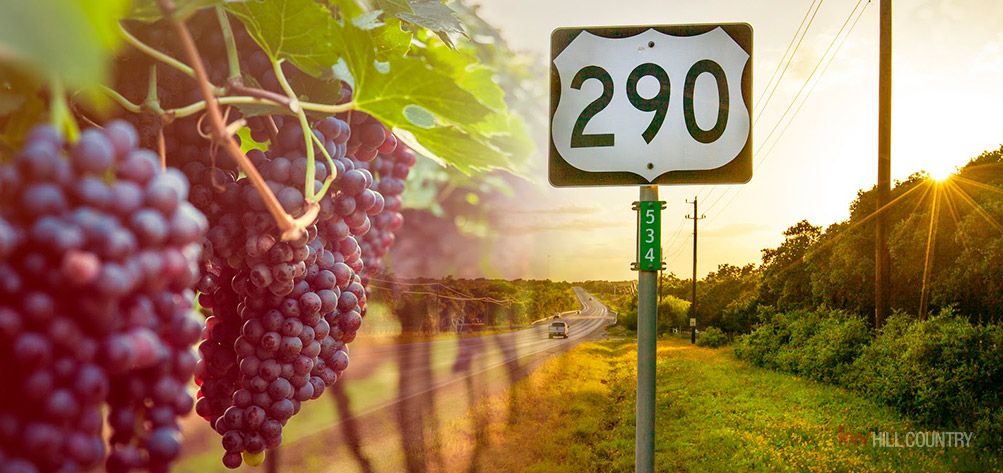Nestled in the heart of the Lone Star State, the Texas Hill Country is a sort of regional paradise, marked by breathtaking sunsets, rolling hills, and sweeping views. And while the area’s natural beauty alone is enough to garner widespread fame and tourism, its fertile soil and rich history have cultivated so much more than just bluebonnets and live oaks.
You guessed it: the Texas Hill Country is also known as a vital part of “Texas Wine Country” for good reason, rapidly gaining international recognition for its quality vineyards and wineries.
So what exactly is the Texas Wine Trail, and what makes it so special? Keep reading for a closer look at the inner workings of this particularly delicious Texan subculture!
A Short History
Far from a stranger to the art of producing incredible wine, Texas has a long and storied history surrounding the craft. According to industry history, the first Texas vineyards were planted and grown by Franciscan priests in the mid-1600s in West Texas (over a century before California!). Though these early beginning were humble (mainly grown for sacramental wine), they have since grown into a statewide industry made up of over 200 wineries, annually producing over 4,000 tons of wine and contributing over $1.35 billion annually to our state’s economy. This growth has caused the area to transform into a true wine destination. In fact, over the course of the past decade, the amount of wineries and wine cases in Texas has more than quadrupled! Texas now hails as the fifth-largest wine producing state (behind California, Washington, Oregon, and New York).
5017 Livingston Rd (Spring Branch)
The Hill Country Soil
Though all contained under the name “Texas wine,” the state’s various regions are divided up into several main sections: the North-Central Region, the South-Eastern Region (which contains the Texas Hill Country AVA), and the Trans-Pecos Region. The southernmost AVA in the country, The Texas Hill Country AVA also boasts a standing as the second largest American Viticultural Area, stretching out over 9,000,000 acres! Due to the warm, sunny, relatively dry climate, most Hill Country varietals are grown from French, Italian, or Spanish grapes.
Image Courtesy of Brodie Vissers
About Texas Wine
So what is Texas wine like? Accoring to one expert, Texas grape growers are beginning to think outside the box, branching out from regional traditions like Cabernet Sauvignon and Merlot. Instead, the state’s most acclaimed wines today include Tempranillo (a rustic Spanish red with notes of tobacco and berries), Sangiovese (a Tuscan favorite with notes of red currant and roasted tomato), Mourvèdre (a French Rhône with earthy notes of plum and blackberry) and Viognier (a French Rhône with notes of apricot, orange, and pineapple), among many others.
Image Courtesy of Dry Comal Creek Vineyards & Winery (in New Braunf els, TX)
The Texas Wine Trail
As the official umbrella of Texas’ widespread selection of Hill Country wineries, the Texas Wine Trail is a self-guided, pre-planned tour of the 50+ unique, beautiful wineries scattered throughout the Hill Country. (See the map here!) Essentially, the Trail offers tourists, visitors, and residents an easy way to explore (and taste) the Texas Hill Country’s best vino. And, for those looking to take their tour a festive step further, the Trail also offers plenty of special events and pop-ups, featuring everything from newly released wines to demonstrations and food pairings (like wine and handmade chocolates for Valentine’s Day!).
We recommend booking a driver if your entire party wants to partake in the festivities. Companies like Majesty Tours will determine your route depending on your taste in wine. Additionally, the tasting rooms can get crowded on weekends, so we recommend visiting on a weekday for more personal attention! See more in our blog “The Local’s Guide to Hill Country Wineries & Vineyards.”
Image Courtesy of Bending Branch Winery in Comfort, TX
Planning Your Trip to Texas Wine Trail
The Texas Wine Trail’s rapid growth and incredibly delicious vino have (naturally) attracted a diverse group of tourists, from honeymooners to sommeliers. In fact, Texas has recently been named one of the top wine destinations in the country, second only to Napa!
And while tourists head to Texas’ “Wine Country” for the vino, they often stay for the Hill Country hospitality and charm. The are a’s charming small tows (think: Dripping Springs, Spring Branch, Canyon Lake, Fredericksburg, and New Braunfels) offer authentic German food, Texan barbecue, antique shopping, and legendary Hill Country musicians, artists, chefs, and entertainers.
5017 Livingston Rd (Spring Branch)
Overall, the heartbeat of Texas wine culture is overwhelmingly present in the Hill Country...and growing faster all the time! Jessica Dupuy, a certified sommelier who covers wine regularly for Texas Monthly, recently said, “I think in the next decade, we’ll be talking about wine tasting like Texas in the way that we talk about Oregon or Washington."
Interested in what life looks like in Texas wine country? To discover where you fit, from farm and ranch to luxury, contact one of our licensed agents! Plus, download our exclusive Buyer’s Guide to discover tips written specifically for the Hill Country buyer.





 Back
Back





